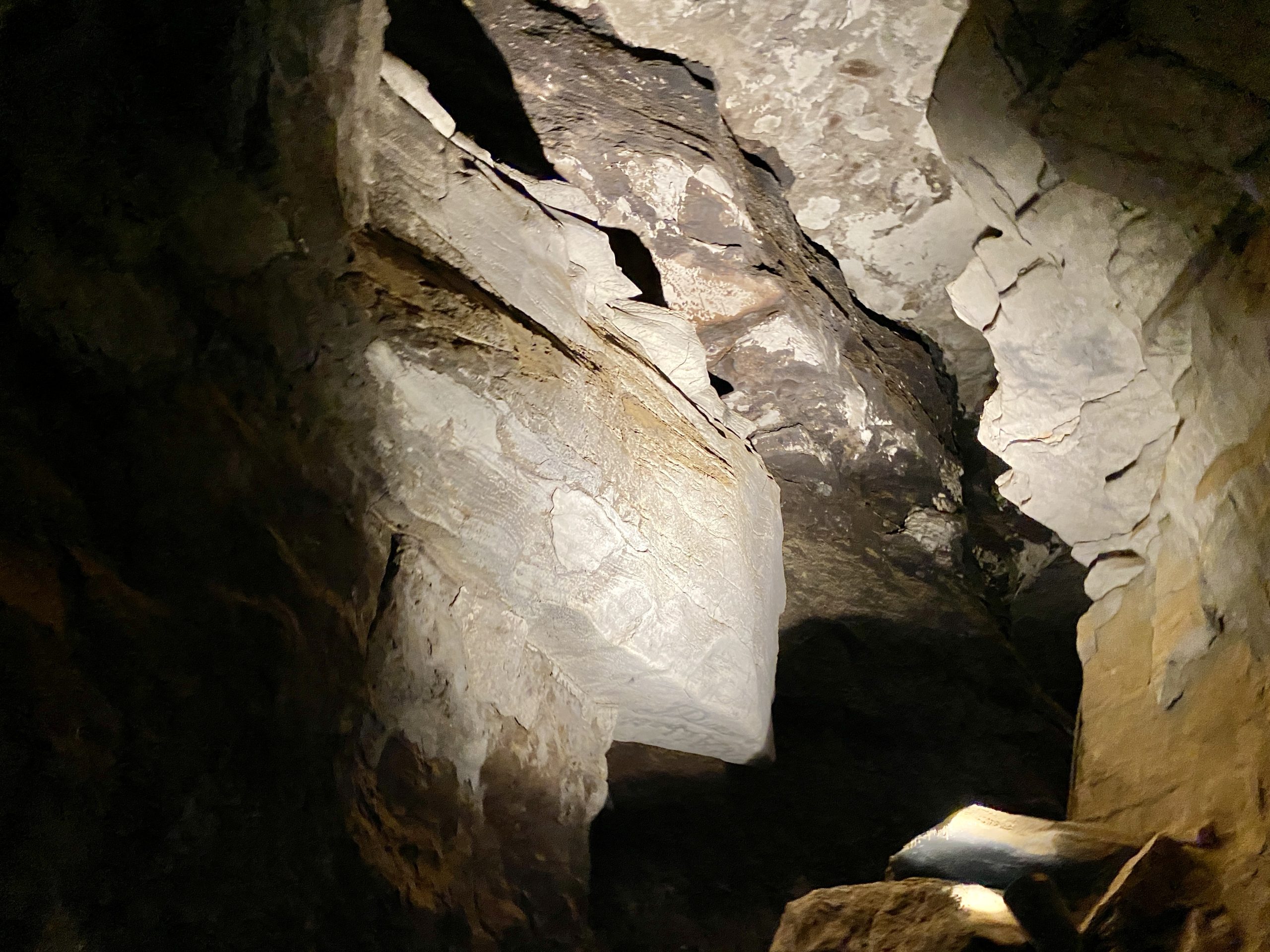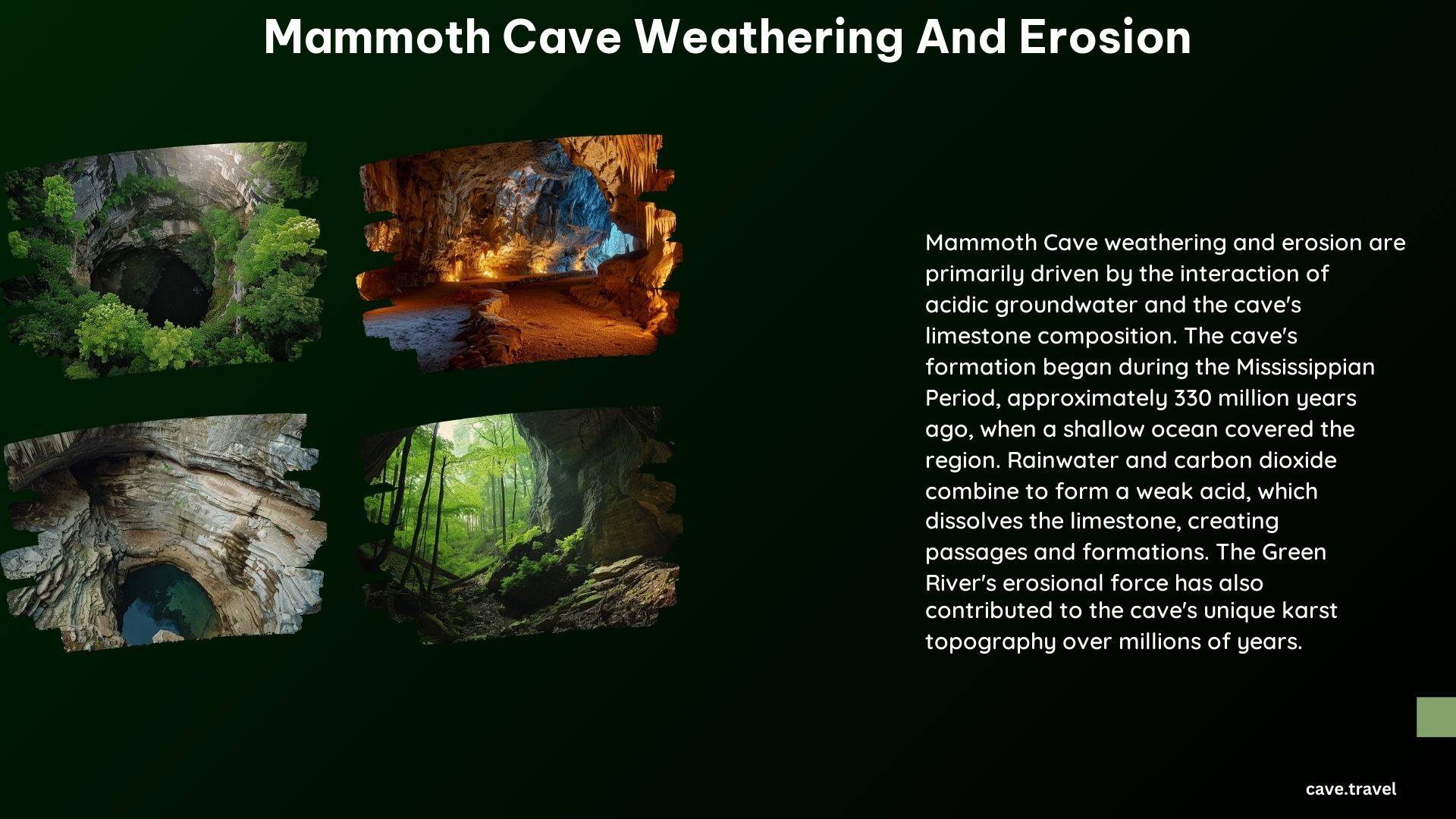Mammoth Cave, located in central Kentucky, is a UNESCO World Heritage Site and an International Biosphere Reserve. The cave’s unique geology is shaped by weathering and erosion processes that have occurred over millions of years. In this blog post, we’ll explore the key details about Mammoth Cave weathering and erosion, as well as the different types of passages and other geological features found within this remarkable natural wonder.
Weathering of Mammoth Cave

Weathering is the process of breaking down rocks into smaller particles. In the case of Mammoth Cave, the primary weathering force is carbonation, which involves the reaction of carbon dioxide with water to form a weak carbonic acid. This acid dissolves the limestone, creating passages and caverns within the cave system.
Erosion of Mammoth Cave

Erosion plays a significant role in shaping the passages of Mammoth Cave. The cave’s limestone is susceptible to erosion due to its chemical makeup and the presence of acidic groundwater. The Green River, which runs through the park, has helped carve the limestone into the unique karst topography of the region over millions of years.
Underground Rivers and Mammoth Cave
Underground rivers, formed by the slow dissolution of limestone by groundwater, play a crucial role in the geological structure of Mammoth Cave. These rivers converge and create the cave’s passages, which can be classified into different types such as canyon passages, tube passages, vertical shafts, and keyhole passages.
Types of Mammoth Cave Passages
- Canyon Passages: Formed by underground streams that follow the tilted layers of limestone, eroding channels downward through the bedrock. These passages are usually taller than they are wide, resembling canyons above ground.
- Tube Passages: Wide, oval-shaped tunnels formed while filled with flowing water. These passages are found in lower levels of the cave, where the water table would have been found.
- Vertical Shafts: Tall, narrow passageways that form when water flows straight down through vertical cracks in the limestone beds.
- Keyhole Passages: A combination of tube and canyon passages, formed by changing water levels during the cave’s formation.
Other Geological Features of Mammoth Cave
In addition to the various types of passages, Mammoth Cave is home to several other unique geological features:
- Karst Topography: The region’s unique landscape characterized by sinkholes, sinking streams, and caves.
- Stalactites and Stalagmites: Formations created by the slow deposition of calcium carbonate from water dripping or flowing down the cave walls and over collapsed blocks of limestone.
- Fossils: Remains of ancient life found in the cave, dating back to the Mississippian Period.
Visiting Mammoth Cave
Mammoth Cave National Park offers a variety of tour options for visitors to explore the cave’s remarkable geology:
| Tour Type | Duration | Cost |
|---|---|---|
| Mammoth Passage Tour | 1 hour | $10 per person |
| Historic Tour | 2 hours | $20 per person |
| Domes and Dripstones Tour | 3 hours | $30 per person |
| Grand Avenue Tour | 4 hours | $40 per person |
| Violet City Lantern Tour | 2.5 hours | $60 per person |
The park is open year-round, except for December 25, and tours operate from 9:00 AM to 5:00 PM. Visitors can find the park at 1 Mammoth Cave Parkway, Mammoth Cave, KY 42259.
Mammoth Cave is a unique and fascinating geological wonder, offering an unparalleled cave experience for visitors. By understanding the weathering and erosion processes that have shaped this remarkable natural treasure, we can better appreciate the intricate and ever-evolving landscape of Mammoth Cave.
References
- https://www.usgs.gov/geology-and-ecology-of-national-parks/geology-mammoth-cave-national-park
- https://www.nps.gov/maca/learn/nature/rocks-of-mammoth-cave.htm
- https://npshistory.com/publications/maca/index.htm
- https://kgs.uky.edu/kgsweb/olops/pub/kgs/xsp7reduce.pdf
- https://www.nps.gov/maca/learn/nature/how-mammoth-cave-formed.htm
